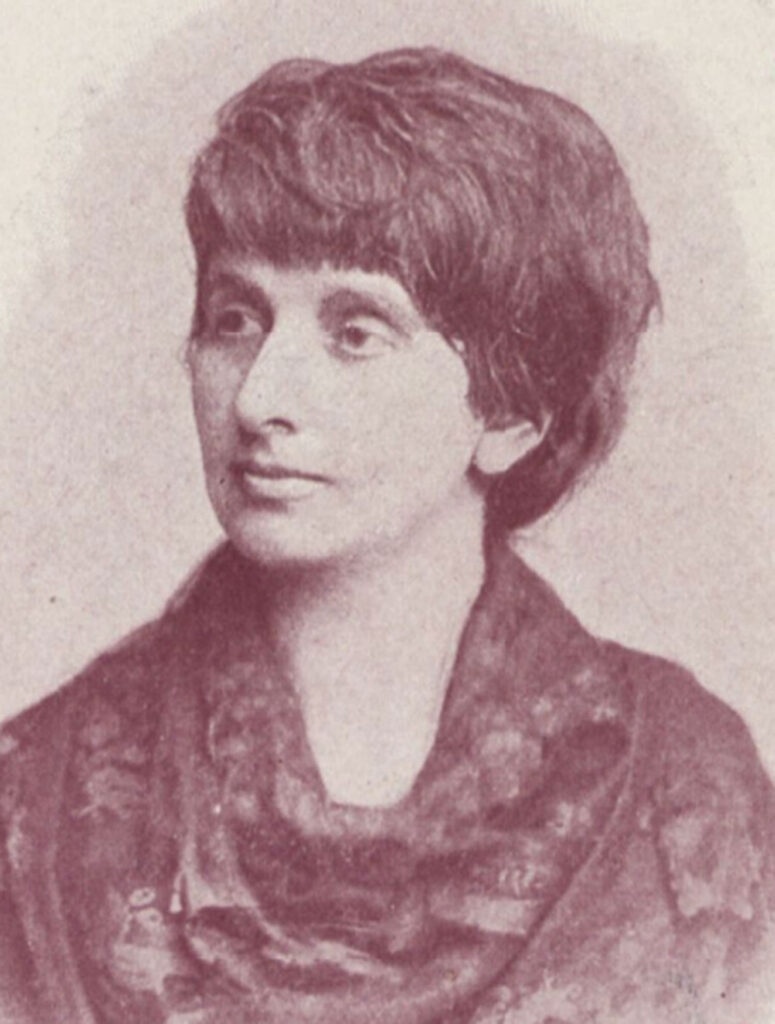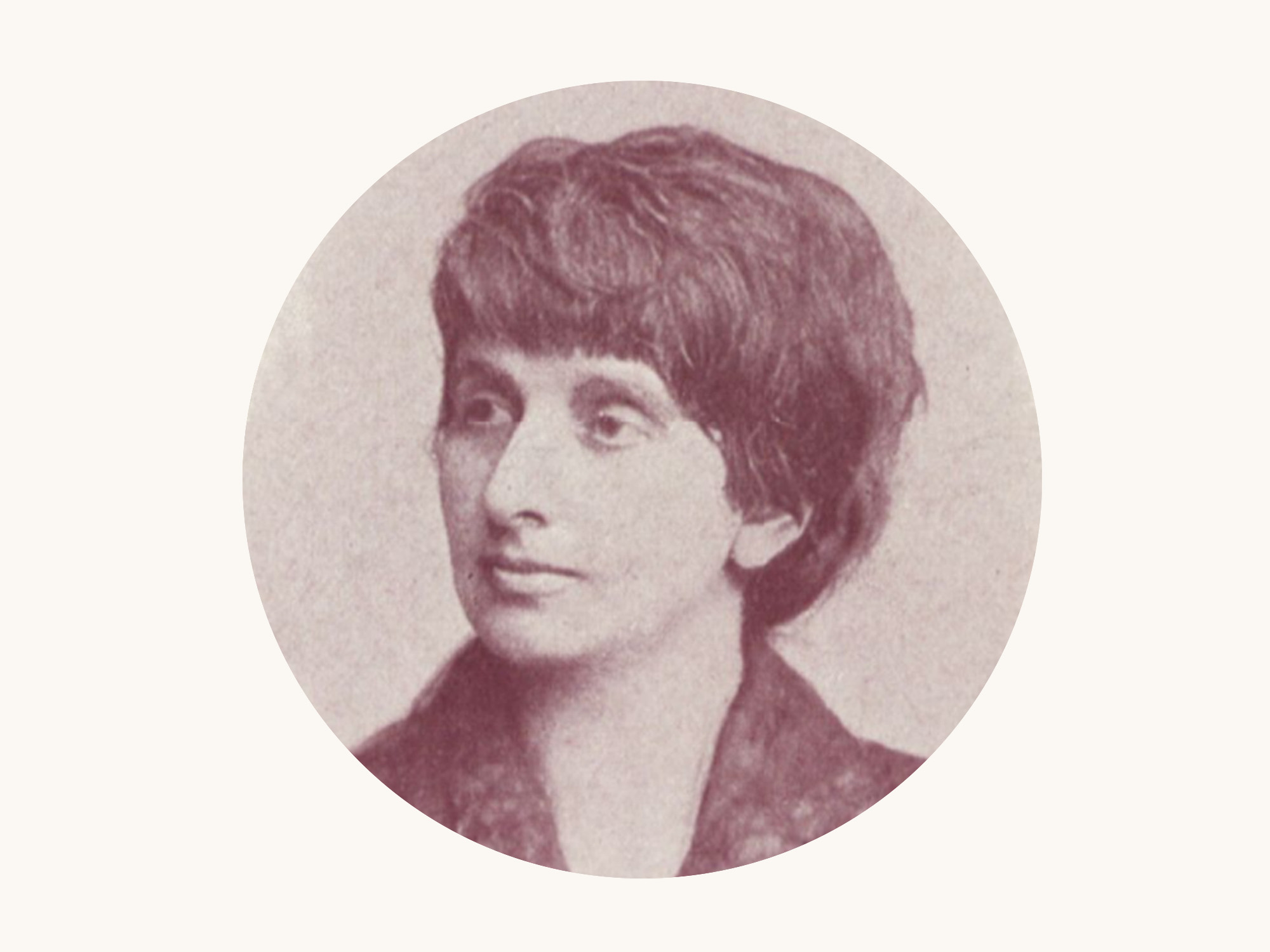At the end of the 19th and beginning of the 20th century, the “women’s question”—the struggle of women for the right to education, independence, and suffrage—was a major social question that Rudolf Steiner addressed again and again.
He was personally acquainted with many eminent protagonists of the women’s movement, including Rosa Mayreder and Marie Lang, and he also personally knew Hedwig Dohm, one of the first women to stand up for women’s rights. Hedwig Dohm wrote novels and novellas but became known mainly for her socio-political writings, which included titles such as, “What the pastors think of women” (1872), “Women’s scientific emancipation” (1874), and “Women’s nature and rights. On female emancipation” (1876). Her daughter Hedwig Pringsheim—mother-in-law to Thomas Mann—described how her mother had deplored “that she was partly ignored, partly ridiculed. The time was not yet ripe. That the time eventually was ripe is to no small degree due to Hedwig Dohm, this bold, passionate, rebellious voice. Everything she fought and suffered for, everything she was ridiculed and abused for, has come true, and even much sooner than could ever have been expected. Although close to her death, she was able to witness the beginnings of higher and university education for women, of jobs for women in business and science, and even of active and passive suffrage for women.”1 She rejoiced that her daughters and grand-daughters were able to wear what she described as their “own spiritual gown.”2

Biography
Hedwig Dohm was born on September 20, 1831, to the Jewish tobacco manufacturer Gustav Adolph Schlesinger (who adopted the name Schleh after converting to Christianity) and Henriette Jülich. Like her siblings, she was born out of wedlock: because her mother was considered socially inferior, her parents were not able to marry until 1838. Hedwig was the third of eighteen children, two of whom died in infancy. In her memories, which contain vivid descriptions of life in Berlin before 1850, she relates how she suffered from her mother’s indifference and narrow-mindedness.3 “From that dark and loveless youth, a certain shyness and insecurity remained with her until the end of her life,” her daughter wrote. Young Hedwig found the sentimental school education provided for girls at the time rather dull. However, the teacher training she finally undertook after much struggle to convince her parents did not satisfy her thirst for education in any way.
In 1853, she married Ernst Dohm (1819-1883), who had studied theology and became editor-in-chief of the satirical magazine Kladderadatsch [originally onomatopoeic for “crash”]. The couple had five children: four daughters and a son who died at the age of 12. Their marriage was not without conflict. The couple also had to separate for a while when Ernst Dohm was forced to leave Berlin to escape debtors’ prison. It was Hedwig Dohm’s heartfelt wish to be the kind of mother to her children that she herself would have wished for. “Seeing her as a pioneer and poet, it is almost a miracle how she developed given her background. But as a mother, she was a dream. […] Until her death, she was filled with tenderness, devoted love, continuous striving to make her children happy, to educate them to become free and independent human beings.” From the mid-1870s onward, Hilde and Ernst Dohm invited friends to their house every Monday evening in order to offer stimulating entertainment to their daughters. Although the Dohms were only able to entertain on a humble scale, these gatherings developed over time into a famous “salon” where Berlin’s cultural greats came together.
“She was beautiful,” Hedwig Pringsheim wrote of her mother, “and charming; small and delicate in stature, with large, green-brown eyes and black hair which she wore pinned up in simple strands in pictures from her youth, but which she later cut short so it softly framed her wonderful face. […] I never knew a woman who embraced everything human in a kinder, more understanding, more tolerant, more warm-hearted fashion, whose heart was wide open to every joy and sorrow, who welcomed every progress with ardor, and who was younger and more enthusiastic in her old age than all her children and grandchildren put together. I don’t really know when it was that she discovered her vocation as a writer, what originally drove her to take up the pen as a pioneer of her sex. Her husband certainly did not encourage her, but neither did he stop her. […] Those who only knew her from her rebellious writings and expected to find a mannish woman would not believe their eyes when confronted with this fair, lovely, and timid little creature. But a god had given her the voice to say what she had suffered, what she wanted to spare her sisters in the future. When I leaf through her work today […] I marvel at the power of her writing, the brilliance of her style, the passion of her feelings, and I certainly have the impression that she was a born writer.”
Women’s Questions
Hedwig Dohm began writing about the women’s question as early as the first half of the 1870s. As with other pioneers of women’s rights, her attention to this question was probably first awakened by her own painful deprivation of a deeper education in her youth. But her work is also about women’s total, even financial dependence on their husbands, about their shadow existence in the service of home and family, the withholding of civic rights, and so on. One of her most important writings—on women’s nature and rights (1876)—is divided into answers to the following questions: “1. What do most people see as a woman’s qualities? – 2. What qualities ought to characterize female nature in the view of men? – 3. Why do men expect these qualities in women? – 4. What qualities do women really have? – 5. Do these qualities constitute a woman’s character?” In her book The Anti-Feminists, she wrote something in 1902 that is reminiscent of the chapter “Individuality and Species” in Rudolf Steiner’s Philosophy of Freedom: “Whether I am man, woman or neuter […] above all I am I, a particular individuality, and a particular value arises from this individuality.”4
She also wrote literary works, novels, and plays on her great themes. Her 1894 novella Werde, die du bist [Become who you are], for example, is wonderful, composed with astounding power of language, movingly telling the story of the bourgeois housewife Agnes Schmidt, who only finds herself at an older age: in painful processes and in the first experience of a true love, she becomes who she really is.

Self-Education
According to her daughter, Hedwig Dohm bitterly lamented until the end of her life that “the inadequate girls’ school education of the time had stood in her way at every turn. At times, she would almost despair because of her lack of a solid foundation, and even at an advanced age, she would try with touching zeal to fill these gaps, arrange lectures by Ernst [Eugen] Dühring in our house, sit devoutly at Simmel’s feet in the university, invite Rudolf Steiner to give lectures at her house, never missing an opportunity to catch up on what her youth had withheld from her.”
The fact that she invited such opposites as Eugen Dühring and Rudolf Steiner to give lectures shows how Hedwig Dohm was searching in all directions. She probably became aware of Steiner around the turn of the century, but in any case, she was present at the memorial service of The Kommenden for Ludwig Jacobowski on December 5, 1900, where Rudolf Steiner gave an eulogy. In an undated letter, probably sent shortly before the publication of Lucifer magazine in June 1903, she wrote, “Esteemed Mr. Steiner, I am looking forward to your monthly magazine all the more as I am unable to hear your lectures this winter. May I invite you and your dear wife to me on Sunday evenings again? I think I will try in the New Year. On Mondays from 4 to 6 o’clock, I hold what we call a Jour [regular day for receiving visitors]. Perhaps you will tell your wife, to whom I send my best regards. Yours with esteem, Hedwig Dohm.” She was one of the first subscribers to Lucifer—and, as can be seen from the above communication from her daughter, also organized lectures by Rudolf Steiner in her home.
On October 31, 1907, however, she had to “sadly ask to remove me from the list of Lucifer subscribers. Just as increasing hearing loss and other age-related weaknesses have prevented me from attending your lectures for years, my weak eyes now prevent me from reading. They can hardly cope with the bare necessities. The shadows of old age are sinking deeper. It is not with a light heart that I renounce the spiritual seeds that shone for me from Lucifer and from your lectures. I owe you much gratitude. Yours with esteem, Hedwig Dohm.”5.
Even in her old age, during World War I and literally “on her deathbed,”6 she raised her voice against nationalism and war mania on June 1, 1919. Her works suggest that she struggled inwardly to the very end with the question as to whether human beings are essentially spiritual or earthly. But the “spiritual seeds” she owed to Rudolf Steiner certainly found fertile ground in the depths of her great soul.
Translation Margot M. Saar
Footnotes
- Hedwig Pringsheim, Meine Eltern Ernst und Hedwig Dohm, in: Meine Manns. Briefe an Maximilian Harden [My family. Letters to Maximilian Harden] 1900–1922. Berlin 2008, pp. 268–271. All following citations, if not otherwise indicated, are taken from this article.
- Kindheitserinnerungen einer alten Berlinerin [Childhood memories of an old Berliner] in: Hedwig Dohm/Hedda Korsch, Erinnerungen. Zurich 1980, p. 53.
- See previous footnote.
- Hedwig Dohm, Die Antifeministen. Ein Buch der Verteidigung [The antifeminists. A book of defense]. Berlin 1902, p. 135.
- Original letters in Rudolf Steiner Archives, RSA 086.
- Vossische Zeitung, June 7th, 1919.













